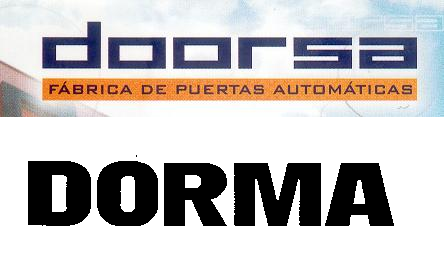Persberichten waaruit de expertise blijkt
Gerecht EU 16 november 2011, zaak T-500/10 (Dorma GmbH & Co. KG tegen OHIM/Puertas Doorsa, SL)
 Gemeenschapsmerk. Oppositieprocedure tegen aanvrage gemeenschapsbeeldmerk 'doorsa FÁBRICA DE PUERTAS AUTOMÁTICAS' op basis van oudere Engelse en internationale woord- en beeldmerken 'DORMA'. Over het indienen van aanvullende documenten om de reputatie van oudere merken te bewijzen in de procedure bij Board of Appeal.
Gemeenschapsmerk. Oppositieprocedure tegen aanvrage gemeenschapsbeeldmerk 'doorsa FÁBRICA DE PUERTAS AUTOMÁTICAS' op basis van oudere Engelse en internationale woord- en beeldmerken 'DORMA'. Over het indienen van aanvullende documenten om de reputatie van oudere merken te bewijzen in de procedure bij Board of Appeal.
Meeste aanvullende documenten bestaan uit persberichten waaruit de expertise van aanvrager blijkt, maar niet gerelateerd aan de goederen of diensten gedekt door de eerdere merken. Overigens komen deze artikelen ook van de website van aanvrager. In het bijzonder is er geen bewijs geleverd betreffend o.a. marktaandeel van eerdere merken (zie r.o. 53). Relatieve weigeringsgrond: geen verwarringsgevaar. Klacht wordt afgewezen, oppositie wordt toegewezen.
Bewijs 52 Lastly, as correctly stated by the Board of Appeal in paragraph 25 of the contested decision, the enhanced distinctive character of the earlier marks would have had to be based on use of the marks for the goods and services for which those marks were registered.
53 Most of the documents consist of press articles which indeed mention the applicant’s expertise, but make no reference at all to the goods or services covered by the earlier marks, with the exception of a passing reference to the TS90 product. A large number of documents come from the applicant’s own Internet site and, as correctly stated by the Board of Appeal in paragraph 25 of the contested decision, the documents relied on by the applicant demonstrate that it is known for its expertise ‘in improving visitor access at historic and cultural centres in the United Kingdom’ and as ‘one of the world’s leading suppliers of door technology systems and allied products’, but contain no specific reference to the goods and services covered by the earlier marks.
54 In particular, the applicant supplied no evidence of: the market share held by the earlier marks; how intensive, geographically widespread and long-standing use of the marks had been; the amount invested by the undertaking in promoting the marks; or the proportion of the relevant section of the public which, because of the earlier marks, identifies the goods or services as originating from the undertaking concerned, and supplied no statements from chambers of commerce and industry or other trade and professional associations, according to the case‑law cited in paragraph 46 above.
Overeenstemming 59 It is clear that the applicant’s argument that the finding of aural similarity alone should have led to a finding that there was a likelihood of confusion is manifestly misconceived.
60 It is indeed true that conceivably the marks’ aural similarity alone could create a likelihood of confusion within the meaning of Article 8(1)(b) of Regulation No 207/2009. However, the existence of such a likelihood must be established as part of a global assessment as regards the conceptual, visual and aural similarities between the signs at issue. In that regard, the assessment of any aural similarity is but one of the relevant factors for the purpose of that global assessment (Case C‑206/04 P Mülhens v OHIM [2006] ECR I‑2717, paragraph 21).
























































































